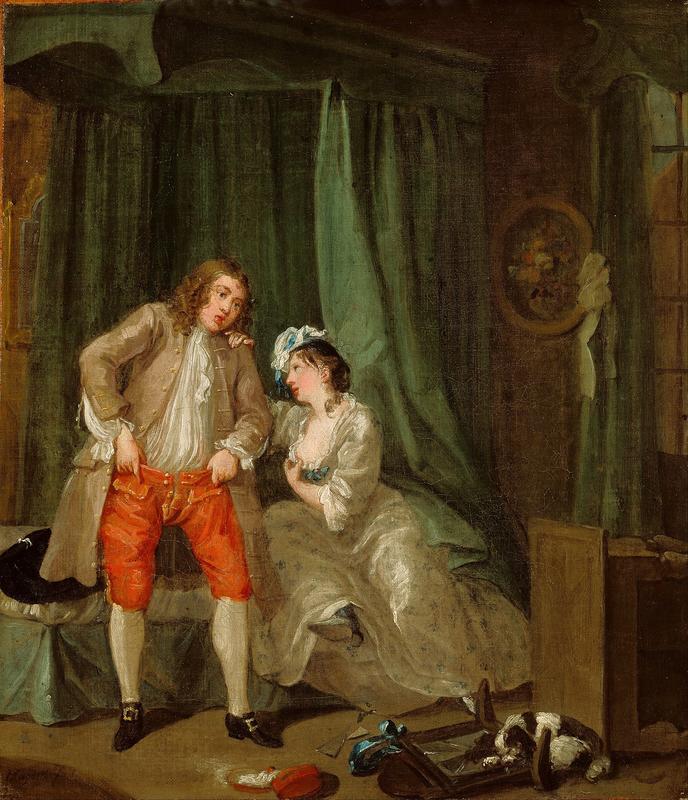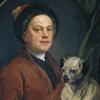More about After

Contributor
After is the part two to William Hogarth’s Before. And if you’ve seen the initial painting, you’re either laughing or shaking your head in disappointment right now.
In the middle of the Rococo period spearheaded by Antoine Watteau, Hogarth set himself apart from his contemporaries by trolling the movement’s tropes and telling longer formed stories through multiple paintings. Series like Marriage A-La-Mode and A Harlot’s Progress tell their respective tales over the course of six pictures. This dude was just itching to be a comic book artist, but he was born a little too early.
There are a few reasons why Hogarth’s work is reminiscent of today’s funny pages. If you look at the history of the medium, it has its roots in political satire. You take what everyone’s talking about and you make fun of it. Well, Hogarth was king of the court jesters in his day. From French fashion to the life of a prostitute, there wasn’t much he left alone. If he was alive right now, I could see his work being featured in popular news outlets like the Washington Post or The Atlantic. But the main reason works like Before and After remind me of comic books is because of the craft on display in each painting—or rather between them.
No, there’s no internal monologue or onomatopoeic sound, but that doesn’t mean that they don’t use one of the fundamental elements of graphic storytelling. Let’s look at After for a second, and its relationship to Before. In the first painting, the man is begging the woman who doesn’t want anything to do with him to sleep with him. And in After, the act is done, and their roles are switched. This time it is the woman who is begging the man to keep mum about what has occurred. Even the dog, who could be seen as a metaphor for the man’s sexual appetite, is now asleep. Both of these paintings are strong on their own, sure. But together, they’re more powerful than the sum of their parts.
As the audience, we never see the actual act take place, but looking at Before and After together helps us fill in the blank space in between. All we have are two paintings of the same people in the same place. But what makes them so powerful is that they exist at two different moments in time: before and after an event. So we have to imagine every action that takes place between those two moments.
Most of us are probably picturing the same base action which is, you know… sex. But where it gets interesting is that everyone comes up with their own little intricacies. Like which leg the dude takes out of the pants first, how many times the dog spins before he lays down and when that mirror fell and broke on the floor. These are things that are relative to each viewer, and it makes the tandem of the paintings so strong. It makes us an active participant in the process of the story, as the relationship between Hogarth and the audience becomes more symbiotic than it would be if we were only looking at either scene alone.
Sources
- Cronin, Brian. “The Sequential Works of William Hogarth.” CBR. October 09, 2008. Accessed December 22, 2018. https://www.cbr.com/the-sequential-works-of-william-hogarth/
- Dorment, Richard “Finding the Fun and Frolics in Hogarth.” The Telegraph. February 06, 2007. Accessed December 22, 2018. https://www.telegraph.co.uk/culture/art/3662999/Finding-the-fun-and-fro…
- Richman-Abdou, Kelly. “Celebrate the Elegance and Exuberance of French Rococo Art.” My Modern Met. April 29, 2018. Accessed December 22, 2018. https://mymodernmet.com/rococo-art/
- Tate. “Room 3: The Harlot & The Rake.” Accessed December 22, 2018. https://www.tate.org.uk/whats-on/tate-britain/exhibition/hogarth/hogart…











